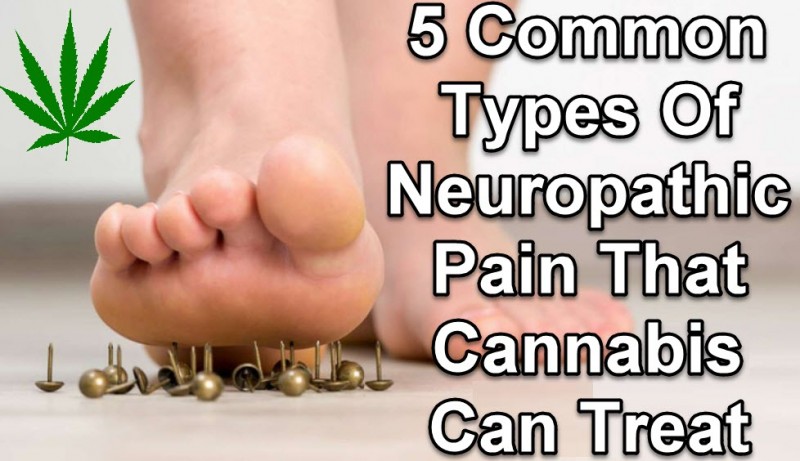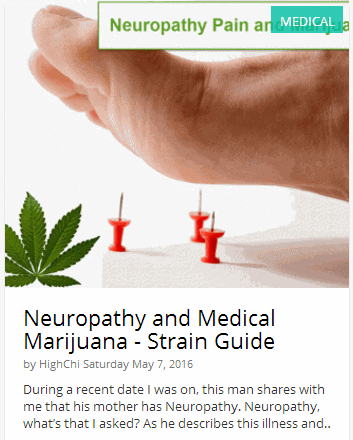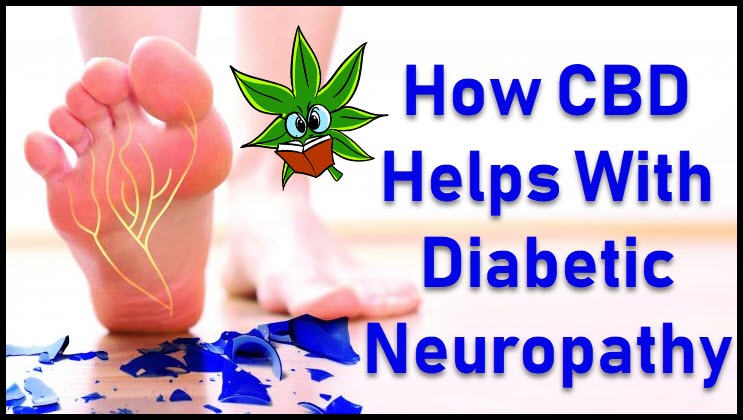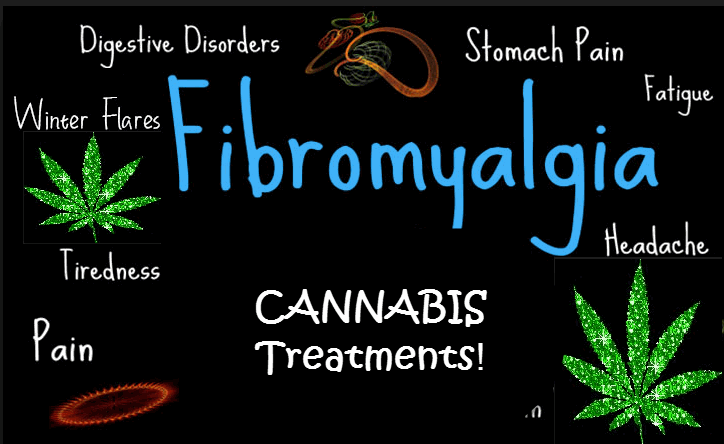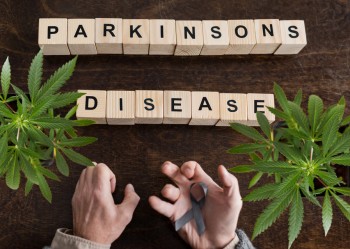5 Common Types Of Neuropathic Pain That Cannabis Can Treat
Got Neuropathy Pain in Your Feet or Hands? Try Cannabis! from CannabisNet on Vimeo.
Neuropathic pain is an umbrella term that is used to refer to different kinds of pain conditions that are caused by injury or damage to the nerves. Common symptoms of neuropathic pain often involve stabbing or tingling sensations, although the area that neuropathic pain affects and its severity, as well as other symptoms, vary greatly.
Neuropathic pain is also one of the most debilitating forms of chronic pain. Without effective treatment, neuropathic pain can be debilitating and rob you completely of quality of life. Many factors can cause neuropathic pain, including amputation, alcoholism, diabetes, chemotherapy, HIV/AIDS, multiple sclerosis, shingles/herpes, spinal cord or nerve compression, thyroid problems, syphilis, and more.
The first line of treatment for neuropathic pain is usually antidepressant and anticonvulsant drugs, as well as non-steroidal anti-inflammatory drugs (NSAIDS). In some cases, a strong painkiller may be prescribed especially for severe cases. But many patients still don’t see the benefits of using conventional treatment for various cases of neuropathic pain, not to mention the unwanted side effects. It is well known in the medical community that neuropathic pain is challenging to treat because it responds poorly to conventional medications. In fact, pharmaceutical drugs may even make the condition worse and lead to a serious disability.
However, cannabis has shown to be effective in treating many common types of neuropathic pain.
- Carpal tunnel syndrome: Carpal tunnel syndrome is characterized by tingling, nerve pain, weakness, and numbness in the hand. It commonly affects working professionals whose jobs require them to perform repetitive movements over a long period of time. Other common causes include driving, writing, sewing, working at an assembly line, sports such as tennis and handball, and playing certain musical instruments. The pain experienced during carpal tunnel syndrome is caused by inflammation in the carpal ligaments.
If carpal tunnel syndrome is diagnosed early, patients may benefit from nonsurgical methods of treatment such as wrist splinting. For severe cases, surgery may be needed to relieve pressure on the wrist by cutting off the ligament that is pressing down on the median nerve. The risks involved with these treatment methods include an incomplete release of the ligament, scar formation, wound infections, and even more nerve injuries.
A McGill University study showed that participants who had chronic neuropathic pain but smoked cannabis 3x daily for 5 days reported a significant reduction in pain compared to participants who were administered with placebos. Moreover, the anti-inflammatory properties of cannabis are well-known. After a few hours of inhaling cannabis or ingesting it in any other form, cannabis can safely and naturally reduce inflammation in the soft tissues, addressing nerve damage and joint pain that is usually associated with carpal tunnel syndrome.
- Sciatica: It’s estimated that around 65 million Americans suffer from one kind of back pain or another. Back pain is a serious epidemic in the United States, and it’s also the second most common reason why adults have to see a doctor. Back pain comes in many forms, and one of these is sciatica, a condition caused by the irritation or compression of the sciatic nerve.
The symptoms of sciatica include lower back pain, a burning or tingling sensation down the leg, a shooting pain that makes it painful or difficult to stand; weakness, difficulty, and numbness when moving the hand or foot, and hip pain among others.
Over-the-counter pain killers are usually prescribed to treat sciatica. These include aspirin, acetaminophen, naproxen, and ibuprofen. However, taking these medications especially for a long period of time may lead to kidney damage, bleeding, strokes, and stomach problems. Opioids, especially powerful painkillers such as fentanyl, can be abused and lead to death. Physical therapy may also be recommended to ease sciatica pain.
In a study assessing cannabis for sciatica conducted by the Department of Orthopedics in the Hasharon Hospital of Israel, researchers found that short term use of cannabis, when smoked, was effective in improving mental and physical function while reducing pain levels among patients with chronic low back pain.
- Phantom limb pain: Amputees are prone to a neuropathic condition called phantom limb pain. This occurs when damaged nerves on the site of the amputation somehow still sends signals to the brain, which makes it feel as though the amputated body part is still there. Phantom limb pain can start as soon as surgery ends, but the symptoms of this condition vary from one person to another.
For some people, the symptoms of phantom limb pain are manifested by burning and twisting sensations, pressure, itching, and more. The duration of phantom limb pain symptoms also differs from one person to another – for one patient it can last seconds, while others need to suffer for hours.
Phantom limb pain is a tricky neuropathic condition to treat, since many patients find no relief from using conventional therapies or pharmaceutical medications. Patients usually have to endure experimenting with different forms of conventional treatment until they find one that works for them, if they ever do. This is why phantom limb pain requires a multipronged approach, which means using medications and therapies from different categories combined with non-medication treatments. Medications for phantom limb pain usually include opioids, muscle relaxants, anticonvulsants, antidepressants, acetaminophen, and NSAIDS. Non-medication treatments for phantom limb pain include mirror box therapy, acupuncture, massage, repositioning of the phantom limb by propping it over a cushion, biofeedback, virtual reality therapy, music, and imagery.
However, many amputees find that using cannabis is beneficial in treating phantom limb pain especially because of its analgesic properties. A 2007 study published in the journal Neurology revealed that when patients smoked cannabis, it was effective in reducing pain by as much as 30% over a course of 5 days. There are over 3 dozen studies that back up this claim.
- Diabetic neuropathy: Diabetic neuropathy is a form of nerve damage that affects individuals with diabetes. This occurs because high blood sugar or glucose levels can damage nerve fibers found throughout the body, although diabetic neuropathy is most often felt in the nerves in the feet and legs.
Depending on the nerves that are affected, diabetic neuropathy can vary from mild to severe, and in extreme cases it can even affect the digestive system, heart, blood vessels, and urinary tract. In severe cases, diabetic neuropathy can be disabling, extremely painful, and even fatal. There are 4 kinds of diabetic neuropathy – some people may have just one form or several types. These are peripheral neuropathy, autonomic neuropathy, diabetic amyotrophy or radiculoplexus neuropathy, and mononeuropathy.
There is no known cure for diabetic neuropathy, although treatment is focused on pain relief, inhibiting progression of the disease, and reducing the risk for complications. Lifestyle changes are usually recommended: stop smoking, lose weight, get adequate sleep and exercise, eat healthy, avoid alcohol, and keep blood sugar and pressure levels under control. Other medications commonly prescribed for diabetic neuropathy include anti-seizure drugs and antidepressants, although these can leave the patient with unwanted side effects.
Cannabis can effectively help individuals with diabetic neuropathy manage their pain and reduce any complications safely and naturally, without any side effects. A recent study published in the Journal of Pain looked at how cannabis can treat nerve damage associated with diabetes. Sixteen patients were asked to inhale 1 out of 3 different dosages of cannabis via a vaporizer, while other participants received a placebo. The participants reported effective pain relief from cannabis as well as an improvement in their diabetic neuropathy symptoms, and pain relief lasted four hours. Additionally, the participants who inhaled the highest dose said that they experienced the least pain.
- Post-herpetic neuralgia: In some cases of the herpes virus, post-herpetic neuralgia occurs. This condition is characterized by pain felt anywhere in the body. Post-herpetic neuralgia occurs when the herpes virus irritates the nerves and neural pathways, resulting in pain even in the genitals. In some cases, post-herpetic neuralgia can be debilitating. The symptoms are described as a tingling, burning sensation, shooting pain, or numbness. Some people experience post-herpetic neuralgia for weeks, sometimes months long after the herpes rash has disappeared.
Currently, there is no one established treatment that has been successful in treating post-herpetic neuralgia. Many patients find that it requires a combination of treatments, although others find no relief at all from conventional medications. Some doctors recommend skin patches that contain lidocaine or capsaicin, which are applied directly to the affected area although if they work, they are only temporary. Antidepressants, anticonvulsants, opioid painkillers, and steroid injections may also be recommended depending on the severity of the case. However, not everyone is open to the idea of getting injected with steroids into the spine or taking harmful opioids that can have dangerous side effects.
Research shows promising evidence that cannabis can be beneficial not just for herpes but for treating the pain associated with post-herpetic neuralgia. A study conducted by researchers from the McGill University in Canada revealed that low doses of inhaled cannabis resulted in modest improvements among patients suffering from neuropathic pain. Additionally, patients saw improvements in anxiety and sleep as well.
5 Common Types Of Neuropathic Pain That Medical Marijuana Can Treat from CannabisNet on Vimeo.
OTHER STORIES YOU MAY ENJOY...
NEUROPATHY AND CANNABIS, CLICK HERE.
OR..
HOW CBD HELPS WITH NEUROPATHIC CBD PAIN, CLICK HERE

